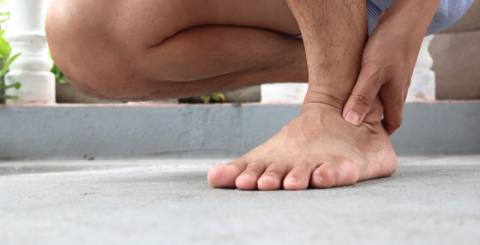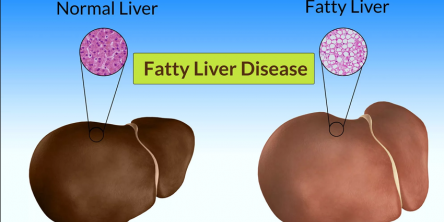10 Effective Steps to Relieve a Gout Attack

Gout is a particularly painful form of crystalline or inflammatory arthritis characterized by swollen, stiff joints caused by elevated serum urate levels. Gout, which is frequently associated with genetics, is not the lifestyle consequence that has been often portrayed. Forget the stereotype of carousing, overindulgent men like King Henry VIII succumbing to gout.
That's just blaming the victim. While it affects men more than women and can be exacerbated by obesity and diet, genetics play a larger role.
During a gout attack, the affected joint swells become warm to the touch and turn bright red. Even light pressure on the joint can be excruciatingly painful. According to the Alliance for Gout Awareness, the majority of attacks occur in the middle of the night and begin in the big toe.
Do you want to avoid excruciating pain? Make sure you have a strategy:
1. Get a Diagnosis
If this is your first attack, see your doctor as soon as possible. Gout is one of the most underdiagnosed diseases due to a lack of information on how to treat high uric acid levels. We now have more information. If you are experiencing a flare, you should have a plan of action in place that you developed with your doctor. The sooner you begin treatment and pain management, the sooner you will be able to get back on your feet.
2. Use the Right Anti-Inflammatory Medications
There are three types of effective medications: over-the-counter nonsteroidal anti-inflammatory drugs (NSAIDs) such as ibuprofen, aspirin, or naproxen sodium; prescription steroids; or colchicine, a prescription anti-inflammatory that influences how your body reacts to uric acid crystals. Your doctor will determine which is best for your specific needs. If you have kidney disease, NSAIDs are not recommended, and steroids may worsen your blood sugar levels if you have diabetes.
3. Free the Joint
The slightest pressure on the affected area can be excruciatingly painful. People say they can't bear being under a bedsheet. When the joint is flaring up, make sure there are no restrictions on it.
4. Rest and Elevate
Stay away from the affected joint and elevate it as much as possible.
5. Apply Ice — if You Can Bear It
If you can do so comfortably and without causing pain, apply ice.
6. Monitor Your Diet
Limiting purine-rich foods (such as red meat, organ meat, and seafood) and alcohol consumption can help lower uric acid levels (particularly beer and hard liquor).
7. Avoid Dehydration
Drinking water can help flush out the uric acid crystals that cause gout. Drink enough water for a well-hydrated to urinate every two to three hours.
8. Try Mindfulness and Meditation
The good news is that a gout attack is self-limiting and will go away on its own. Meanwhile, the Arthritis Foundation recommends meditation, yoga breathing, mindfulness, and guided imagery to help you cope with pain.
9. Create a Support Network
Because of the stigma associated with gout, many patients suffer in silence. Inform trusted friends and family that you have this disease and reach out for help when you are experiencing a flare.
10. If You Are Having Repeated Attacks, Visit Your Doc
Some patients can go a long time without having an attack. In fact, the next attack will be more than a year away for 62 percent of patients, and some will not have another attack in the next ten years. However, if your attacks become more frequent, consult your pain doctor and rheumatologist about escalating treatment. People believe that having flares every now and then is normal, but it is not. Gout can be harmful to your joints. It means you still have an excess of uric acid. Inquire about allopurinol in particular. It will not help with a current attack, but it will help prevent future attacks by lowering uric acid production.
Similar Articles
Back pain – it’s not just a matter of “I lifted a heavy box, and now my back hurts.” It’s often the result of a complex dance between our minds and bodies, with stress, anxiety, and emotions playing lead roles. If you’ve ever woken up with a stiff back after a tough week or felt your spine twinge just from reading a long email chain, you’re not alone.
Chronic pain is a medical problem that affects many people around the world. Unlike acute pain, which is a short-term response of the body to tissue damage, chronic pain lasts longer, often without obvious physical damage. It can last from several months to several years, and its consequences can affect all aspects of a person's life
When was the last time you gave your veins some love? These hardworking highways of blood don’t ask for much—just a little support and, occasionally, professional attention when they’re not performing at their peak.
These small plastic containers are a household staple, but disposing of them incorrectly only adds to the growing waste issue. Learning to eco-dispose pill bottles reduces your footprint and shows love and respect to the planet and future generations.
We often experience small discomforts or symptoms that seem insignificant, like headaches, fatigue, or brittle nails. Many times, we brush them off, thinking they’ll go away on their own. However, these minor issues might be your body’s way of telling you that something more serious is going on.
According to the World Health Organization (WHO), half to three-quarters of adult persons globally experienced a headache in the past year. Unfortunately, tension headaches are one of the most prevalent symptoms you can have. Furthermore, some tension headaches resemble migraine headaches, making matters worse.
The review of Yakrit Plihantak Churna is going to be amazing. You will know the facts, does it works along its benefits. The liver is the main engine of the body. It is the second largest gland in the body.
A podiatrist is a doctor who focuses on treating foot and ankle ailments. If you have specific medical issues, you may need to see a podiatrist for therapy that your primary doctor cannot offer. Don't overlook pain in your lower leg, foot, ankle, or toes.
A podiatrist is a medical expert who focuses on foot and ankle care. There are various reasons you may need to see one.









